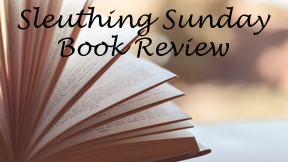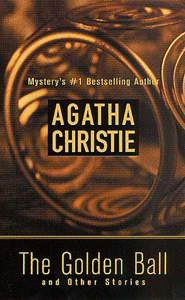“The Golden Ball and Other Stories” (1971) isn’t the most deadly serious Agatha Christie short story collection. There’s barely a murder or even physical violence to be found among these 15 shorts that were initially published from 1924-34.
Stories about life
These are lighter stories about people. The personalities – of men and women struggling in their young lives — spark off the pages, a trait not found in murder-centered shorts, which focus on clues. But once I got into the vibe, I liked it, and it makes me look forward to reading Christie’s Mary Westmacott (non-mystery) novels someday.
I’ll go through the yarns in order:

“The Golden Ball and Other Stories” (1971)
Author: Agatha Christie
Genres: Mystery and romance short stories
Setting: England, 1924-34
In leadoff story “The Listerdale Mystery” (1925), Christie uses an identity-switch plot to examine class differences, as a rich man wants to know how the other half lives. It has one of those convenient romances that seem exclusive to fiction but nonetheless are worthy of a smile – or at least a smirk before I move on to the next story.
“The Girl on the Train” (1924) is even more unlikely, but it’s fun. We follow the rakish George, who desires adventure and very conveniently finds it with Elizabeth, a young woman who asks his help in hiding from a pursuer. As the plot twists and turns, so do George’s hopes for romance. I never quite believed a sad ending would be in Christie’s cards, and she proves me right, albeit in creative fashion.
“The Manhood of Edward Robinson” (1924) is in a similar vein as the title character’s adventure starts with an accidental car-swap. Noreen has her own, more purposeful adventure unfolding around a stolen necklace. Giving this story some grounding, it’s not about Edward and Noreen falling in love, but rather about Edward learning his own worth in his relationship with his controlling fiancée.
Finding themselves
“Jane in Search of a Job” (1924) returns to the convenient-romance trope, but before we get there it’s a wild identity-swap romp that reminds me of things like “The Princess Switch.” Christie’s storytelling is better than a quickie streaming movie, of course, as she honestly portrays Jane’s emotional swings while seeking employment.
“A Fruitful Sunday” (1928) then returns to the male POV, and with another guy named Edward (but not Robinson). A missing necklace again plays a role, but in a funnier way as the thoughts of Edward and Dorothy waver between dreams of riches and their ingrained pull to do the right thing.
The title story, “The Golden Ball” (1929), features the book’s most entertaining rapscallion, George. While it’s not necessarily the best of the collection, the story includes all the overriding themes: A man and woman meet randomly, have a wild adventure secretly driven by the woman (we get the man’s bewildered POV), and find they are in love by the end.

“The Rajah’s Emerald” (1926) portrays a slightly odd man (he doesn’t dress sharply enough, etc.) who gains self-confidence via a random solo adventure. This formula would later be used to perfection in the “Buffy” episode “The Zeppo.” The man’s name happens to be James Bond (a few decades before Ian Fleming’s agent was invented), but the yarn is good enough that you won’t be distracted.
A moody turn
“Swan Song” (1926) starts a darker, moodier turn that carries through the collection’s end. Switching gears, Christie focuses on a purposefully unlikable lead, a talented but supremely arrogant opera singer. This one actually does feature a murder, as the author plays with a trope she’d return to many times: The motive comes from the perpetrator’s mysterious (and off-page) past under a different name.
The collection then delivers five supernatural tales, all from 1933: “The Hound of Death,” “The Gypsy,” “The Lamp,” “The Strange Case of Arthur Carmichael” and “The Call of Wings.” These were re-collected in “The Last Séance” (2019), which I reviewed in a previous post.
Returning to the natural world in striking fashion, “Magnolia Blossom” (1926) finds a man needing his wife’s help to recover incriminating documents. But it’s actually a (PG-rated) romance story. Christie thoughtfully and emotionally compares the morality of cheating on a spouse versus the morality of using one’s spouse as a game piece.
Closing out the book is a simple but heartfelt tale where Christie no doubt draws from her own life. “Next to a Dog” (1929) is about young Joyce’s love for her aging terrier, Terry. A desperately poor widow, she almost marries an awful man because social custom and practical concerns say that only married women keep pets.
In “Jane in Search of a Job,” Christie gravitates to crazy adventure; here she sticks to everyday challenges and the things that truly matter in life, and “Next to a Dog” is all the more effective for it. On the whole, “The Golden Ball and Other Stories” gives us a delightful cross-section of people finding their way in England about a century ago.
Every week, Sleuthing Sunday reviews an Agatha Christie book or adaptation. Click here to visit our Agatha Christie Zone.

